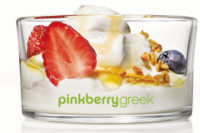Greek-style frozen yogurt is a product that emulates the properties associated with the success of cultured Greek yogurt. Those properties involve primarily protein and acidity (tartness) levels higher than those of conventional yogurt.
This column provides an overview of the technical elements critical to the success of Greek-style frozen yogurt. These elements influence the structure and the final eating quality.
A number of approaches can be used in making “hybrid” or Greek-style frozen yogurt. These approaches include:
• Direct culturing (for example, frozen yogurt, frozen cultured cream, frozen cultured buttermilk)
• Direct acidification (forming a coagulum with glucono-delta-lactone)
• Formation of a non-acidified coagulum based on the amount and type of solids, and manufacturing conditions in which acidity (tartness) is achieved by the addition of organic acids, such as lactic acid and citric acid.
• In rare cases, some combination of these followed by separation (that is, straining) of whey.
In each case, the physical/chemical condition of the proteins needs to be considered as elements that affect flavor (both of the coagulum itself and the added characterizing flavors), mix functionality, market declarations to be made and final product acceptability. The amount and type of acidity (tartness) also influences protein functionality and the degree and quality of the flavor.
Then there are other factors to keep in mind. We’ll look at these one by one.
1. Composition. Depending on how the finished product is to be positioned (soft serve, packaged, novelties or another format) and the nutrient content claims to be made (for example, protein content), the mix composition needs to be matched with market positioning, manufacturing considerations and sensory appeal.
2. Overrun.The level of overrun needs to be balanced with the amount of any given nutrient in the mix so that the relatively small standard serving size of the product (4 fluid ounces/118 milliliters) delivers the targeted nutrient levels (protein, for example). Thus, as overrun increases and finished weights per serving are reduced, the percentage of any given nutrient in the frozen dessert mix has to reflect both the volume and the total weight delivered per finished serving. This can adversely affect many other functional and sensory attributes of the mix.
3. Freezing performance. It is critical to maximize the amount of ice formed in the barrel of the ice cream freezer via the management of freezing point and freezer draw temperature. Yet the processing must still be able to manage the resulting product as needed for the ultimate application and deliver on both nutrient content declarations and sensory appeal.
4. Fat agglomeration. Managing fat agglomeration is important when balancing freezing behavior and eating qualities, such as body (bite and chew) and texture (smoothness and richness), which also influence perception of flavor.
5. Protein destabilization. The amount, type and functional condition of proteins in the frozen dessert mix may be more sensitive to a wide variety of environmental changes (heat, acidity, salts, shear, etc.) which can negatively influence body (weak or crumbly), texture (grainy or mealy), sensory appeal and heat-shock resistance. This can also directly influence the ability of the mix to incorporate overrun.
6. Resistance to heat shock. As with all frozen desserts, how products resist the rigors of distribution and storage is important. Contributing factors include composition, freezing conditions, fat agglomeration and protein stability.
7. Sensory properties.It is obvious that mix composition and the condition and history of the ingredients used can influence body, texture and flavor. The higher levels of protein in Greek-style frozen yogurt can represent an increased influence on overall flavor profiles.
As in other foods, proteins can absorb and mask elements of flavor, thus rendering the final flavor less typical. This is all the more critical in non-acid flavors such as vanilla, chocolate and vanilla, or chocolate-based flavors. Acid-type flavors (fruit flavors, for example) may be more forgiving as they are typically more compatible with base mix acidity. However, adding more acid via a fruit flavor or fruit preparation could negatively influence not only the perception of that flavor but also the functional stability of the proteins themselves.
Therefore, as in all frozen desserts, the success of Greek-style frozen desserts requires the delicate balance of matching consumer demand and sensory appeal with a properly formulated mix.
More information at seminar
Attend our Technical Short Course, Dec. 4 to 6, 2013, Las Vegas, Nev. See www.onicecream.com.




